I logged another interesting day in the yard on Sunday, September 29, 2019. At mid-morning we had birds all over the yard, but most noticeably high in our large fir trees. I was hoping for some photos but the birds were too far away (high). I could see lots of chickadees, juncos and perhaps kinglets and warblers but the angle was too high for my heavy telephoto lens and I didn’t have binoculars with me.
We left to run errands and I watched the first half of the Seahawks game… until I judged the win safe and then went back to the yard. It was an interesting afternoon.
My first interesting guest was a Golden-crowned kinglet that landed on a bird bath beside me several times… too close to photograph! It finally flew to the watercourse and I was able to obtain a single photograph of it.
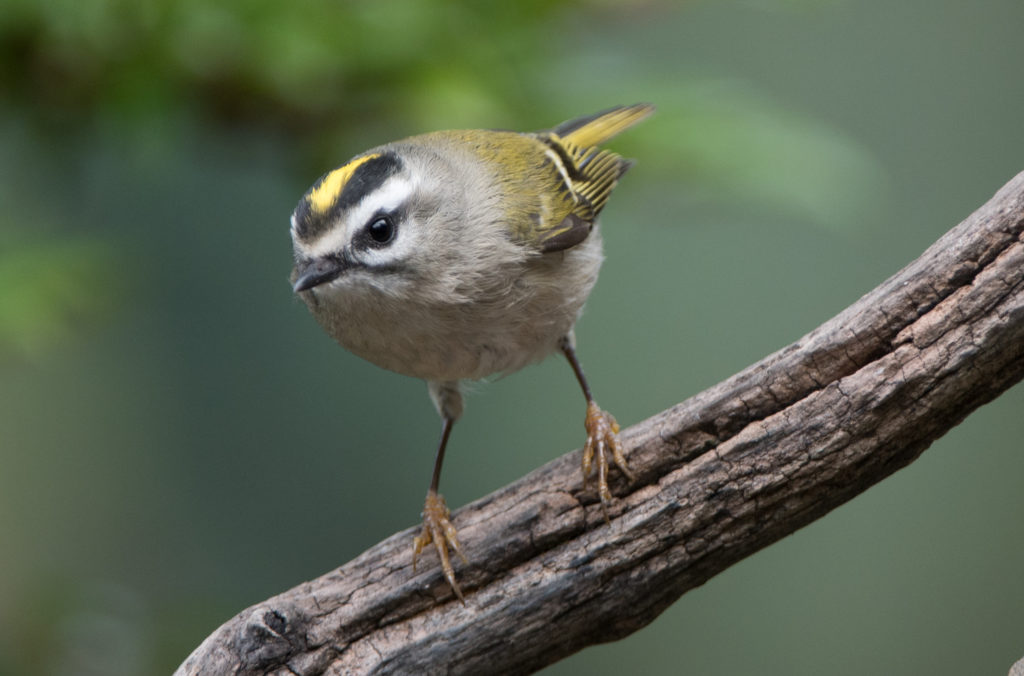
The next interesting birds that appeared where male and female finches. The male looked substantially different from the many other House finches we have around and then I saw a female in the watercourse and that was what raised my suspicions about the possibility of having a couple of Purple finches in the yard. I confess to being unable to differentiate the male House finch from the male Purple finch, but the females of the species are easier to identify. (I’ve known many people that misidentified male House finches only on the basis of color, but the males have a very wide color variation and I’ve never known color to be a safe means of identifying the males of the two species.) The female Purple finches have a broad, light but subtle stripe over the eye and the female in our watercourse seemed to fit that criteria. I never actually saw the pair together but they were in the yard at the same time and apparently left at the same time. The female returned late in the afternoon but I didn’t get better photos.
I hesitated posting these photos and calling them Purple finches, but I ran the photos by a friend who is a more experienced birder than I and this friend identified the birds as Purple finches. So you can make up your own mind!
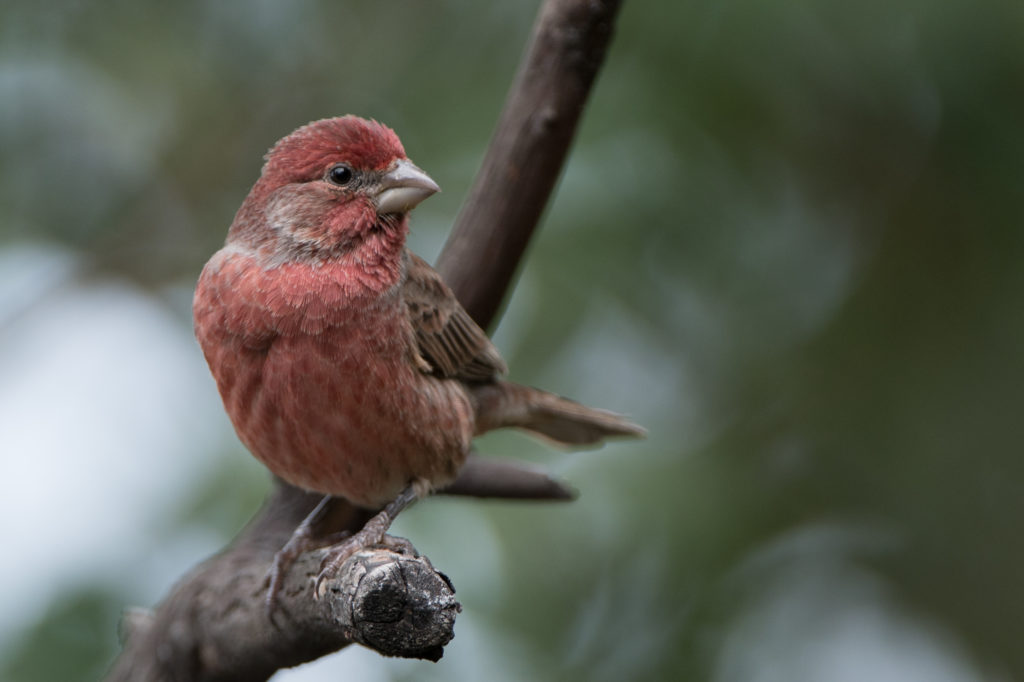
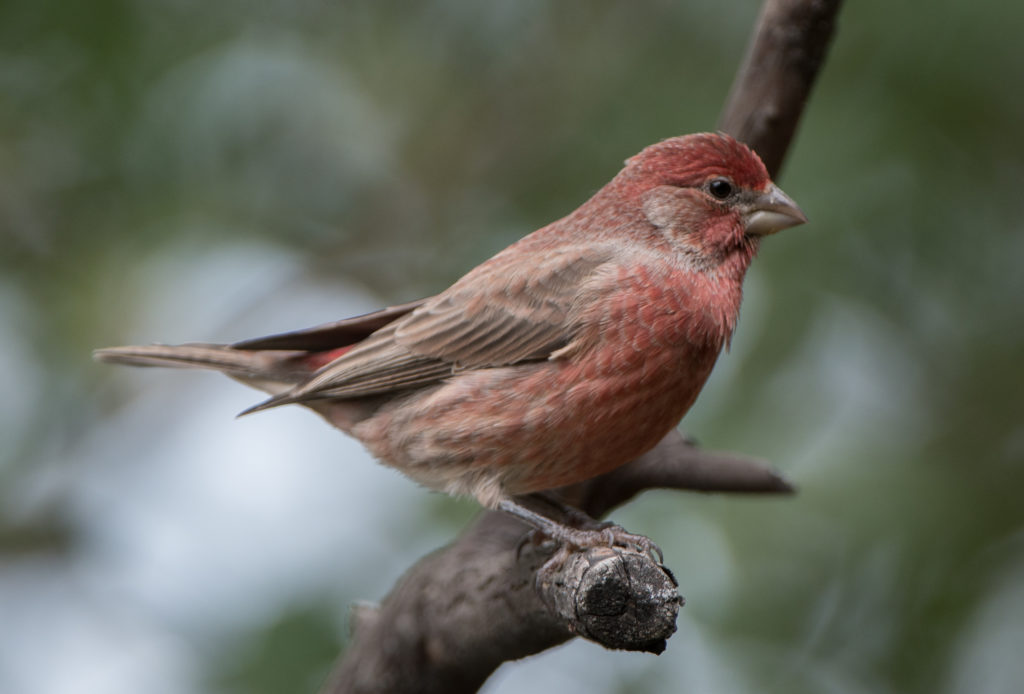
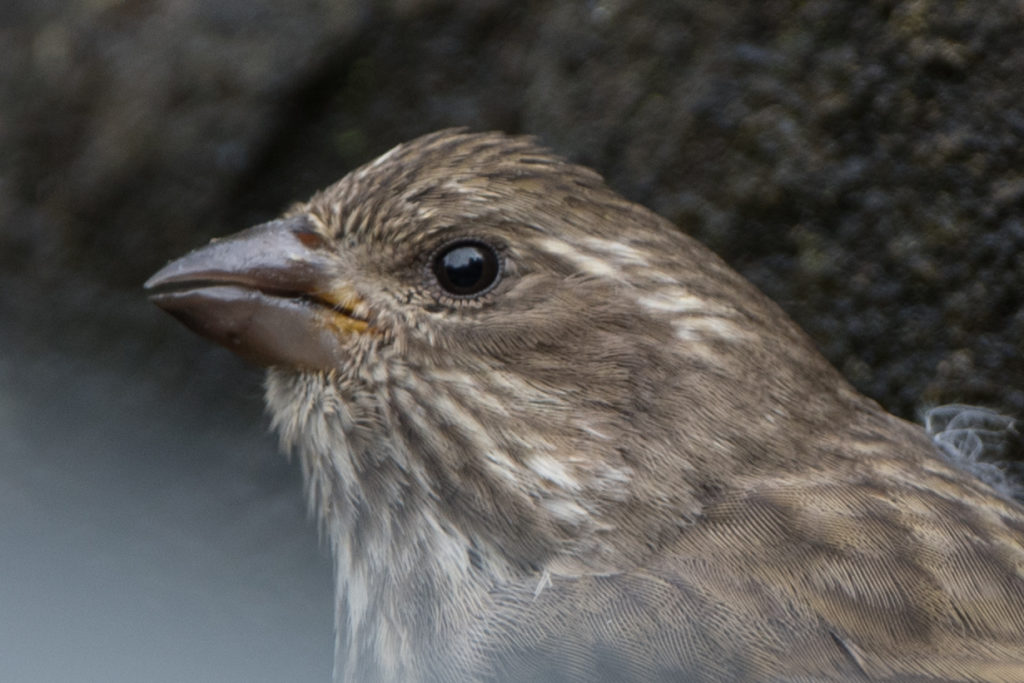
My next interesting guest was a Townsend’s warbler which I managed to photograph extensively. I suspect that this is a first-winter male but you shouldn’t consider that a positive identification. (You might remember from my last post that I saw three Townsend’s warblers in the yard at one time on 9/27.)
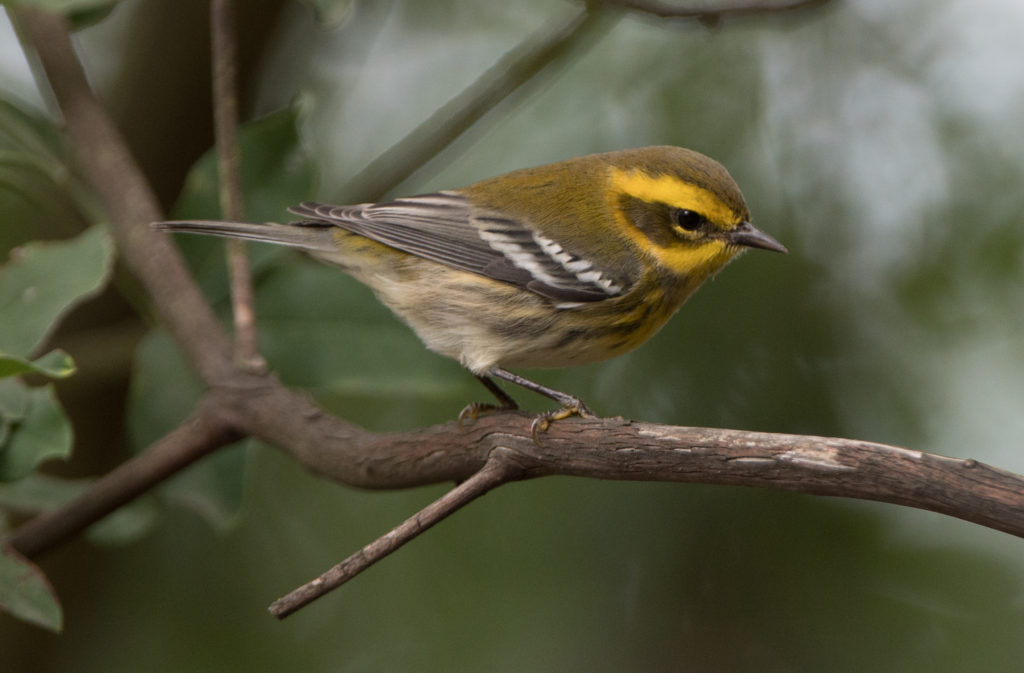
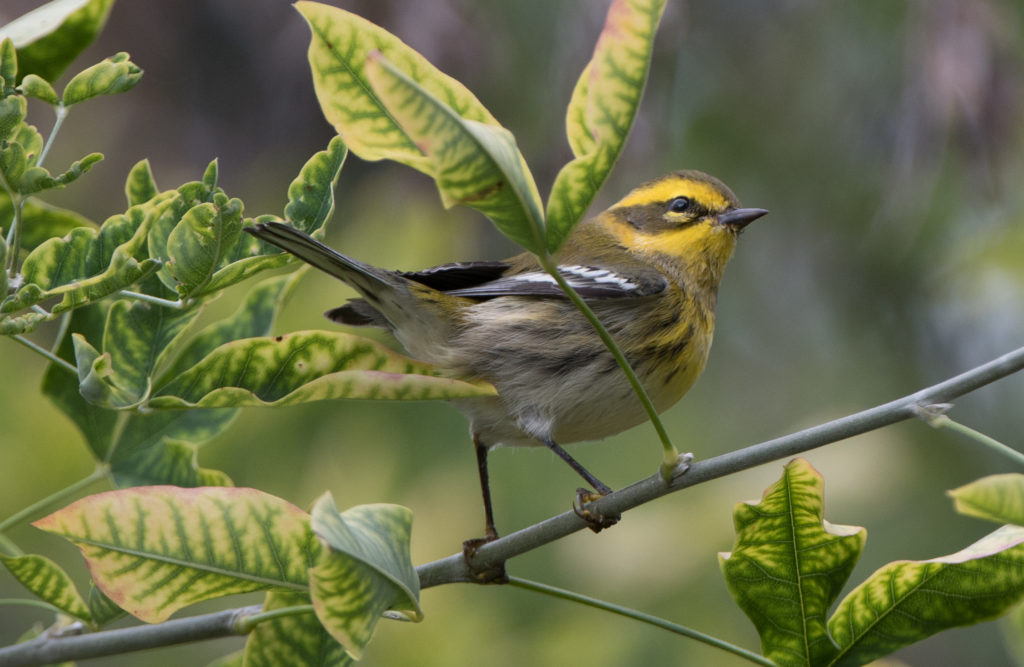
My next unusual visitor, and a very rare one indeed, was a Cap Sante Collared junco!
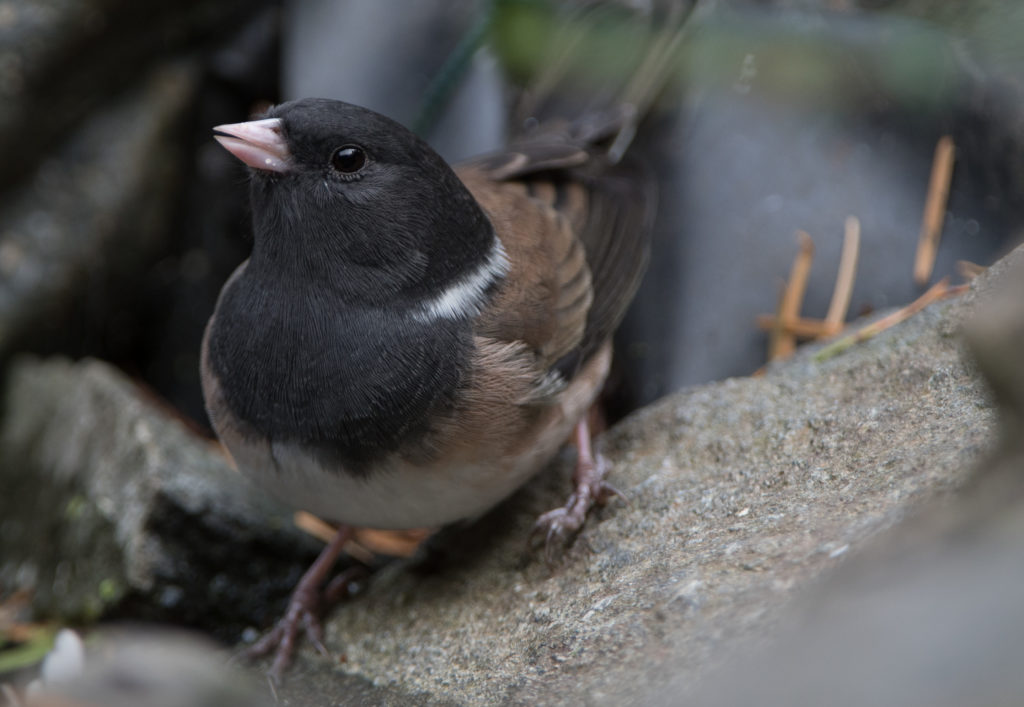
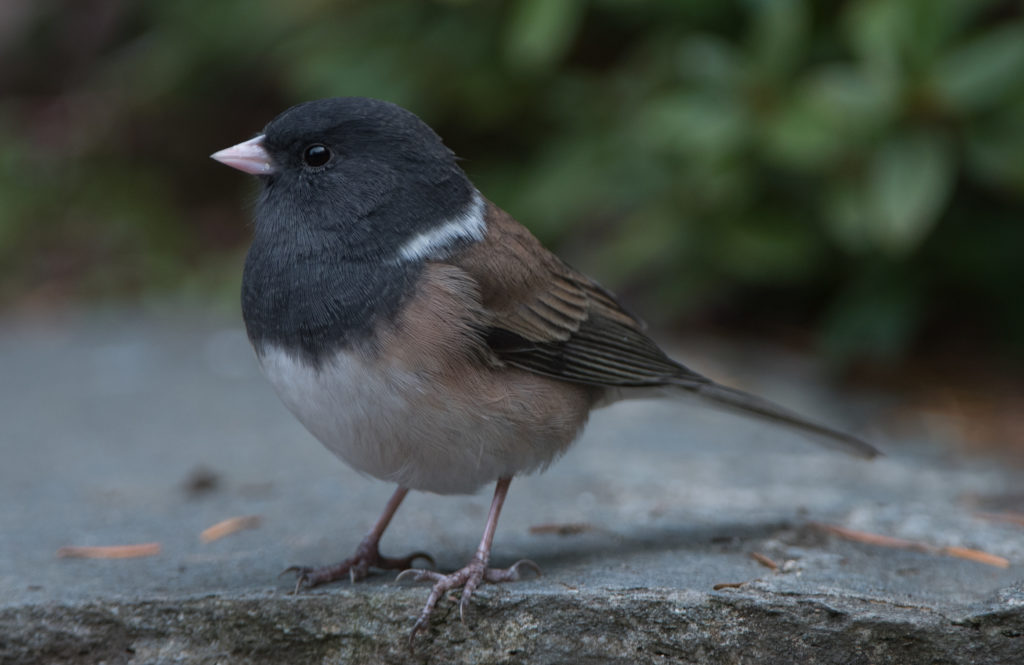
Just kidding folks! But I did have this leucistic Dark-eyed junco of the Oregon race. Note the white collar on this male. It doesn’t completely encircle the bird’s neck but it clearly delineates the feathers between the bird’s hood and back. I’m not sure how much of a bird’s plumage needs to be white in order for the bird to be considered leucistic, but I’m using the term to describe this bird!
The last uplifting visitors to the yard on this day were at least three Yellow-rumped warblers, at least one of which was an Audubon’s race and probably a male. There were several juvenile Yellow-rumped warblers for which I couldn’t identify either race or sex.
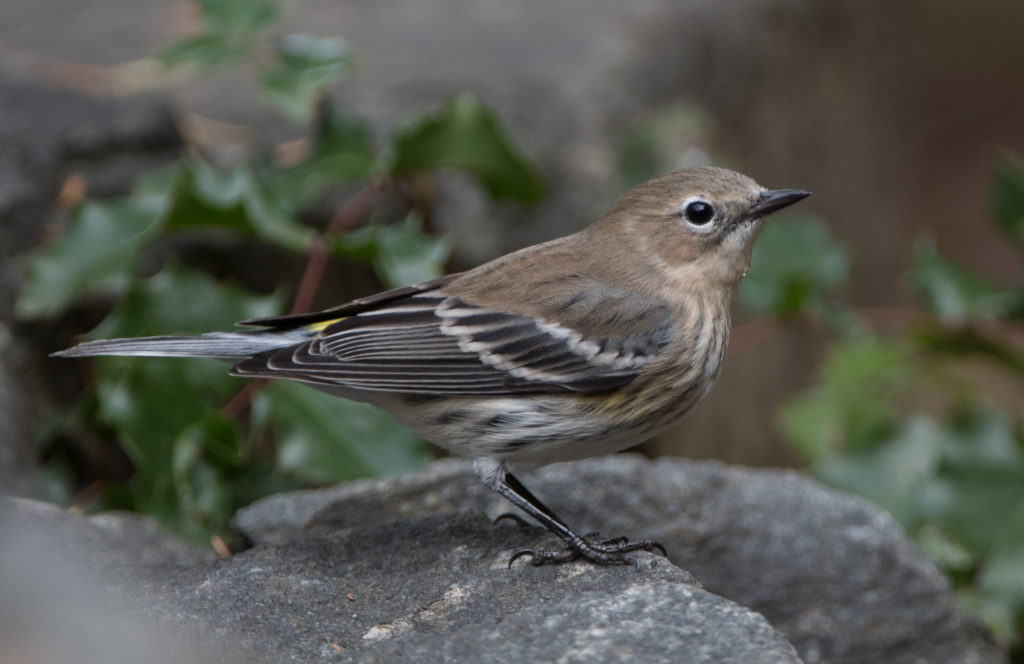
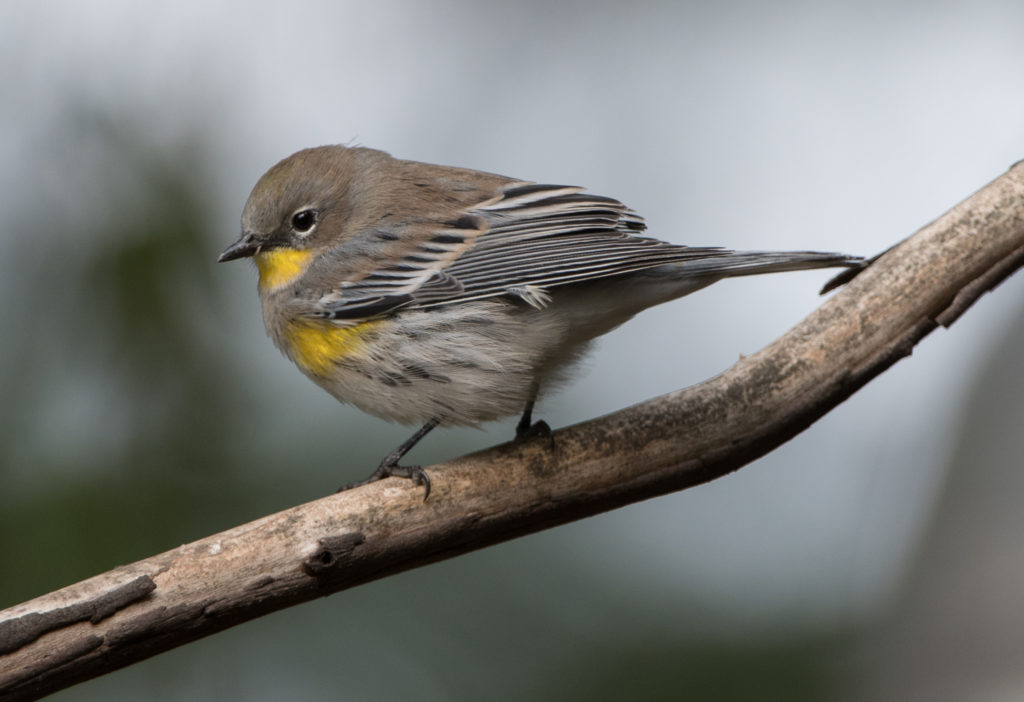
I’m sorry to end on a down note, but I had a male House finch that had the facial tumor disease and it was in sad, but apparently functional, shape. I haven’t seen many diseased House finches the past several months, but I had an American goldfinch a couple of weeks ago the apparently suffered from the disease. It’s the first time I’ve seen the disease in birds other than House finches.
While I’m on the subject, I seem to have had an abnormal number of avian visitors with injuries this year. A male Downy woodpecker that was blind in one eye, a Black-capped chickadee with a let protruding backwards and several birds with deformed feet or which were reluctant to put weight on one of their feet.
